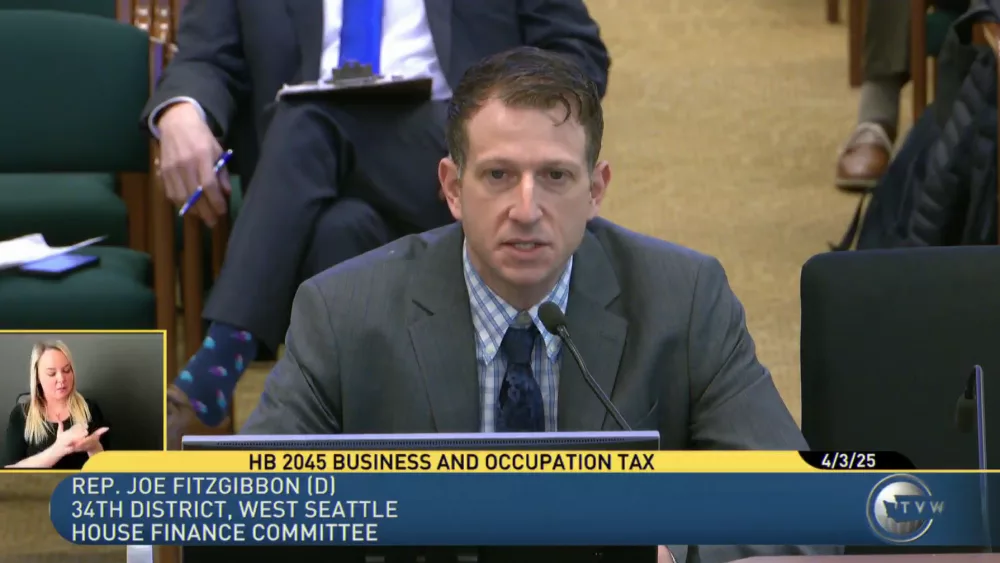(The Center Square) – During this year’s legislative session a group of Washington House lawmakers introduced House Bill 1579, which would have allowed the state attorney general’s office to conduct independent prosecution of officers for illegal use of deadly force. While the bill was moving through the legislature, a critic argued in an email to House legislators that the AGO was using “false and misleading information” regarding the number of estimated number of incidents that occur annually.
That critic, who has numerous ongoing disputes with the AGO regarding an ongoing use of force database project, is now claiming the SPOTLITE Project at the University of Illinois has proved him correct. The AGO has counterargued that the discrepancy is due to different definitions. Yet, state employee communications show that the estimate used in the bill was considered a “worst case scenario.”
In HB 1579’s fiscal note, the AGO states that projections by the Office of Independent Investigations estimates there are approximately 250 cases involving use of deadly force annually, and approximately 28 of those 250 cases result in death. If enacted, HB 1579 would have set OII as a separate division within the AGO and given it the jurisdiction to review county prosecutor’s investigations and file its own charges against officers.
However, the fiscal receipt acknowledges that “there is limited data available on the number of incidents per year where police use deadly force in Washington State because that is not information that is tracked or collected. That makes it difficult to estimate exactly how many cases would come to the AGO if this bill passed.”
When contacted for the story, OII Communications Director Hector wrote to The Center Square the “stat you mentioned actually originated with the Governors Task Force on Independent Investigations.” Among the task force’s recommendations was the creation of OII.
Bob Scales, Police Strategies CEO and former King County deputy prosecutor, wrote in a March 21 email to House lawmakers that “there is absolutely no factual basis” for the numbers included in the bill’s fiscal note.
Scales’ company was considering to subcontract on a bid put out by the AGO to build a statewide police use of force database. Although the contract was awarded to Washington State University, the only qualified institution to do so, Scales has alleged numerous instances of unethical conduct by both AGO and WSU staff, including the university president, during and after the AGO’s request for proposal process.
In a Dec. 4 email to lawmakers, Scales included a link to the SPOTLITE Project, which shows that there were 520 incidents of lethal use of force by police in Washington between 2014-2021. The most in one year during that time period was 2017, when there were 84.
“I don’t expect the legislature to take my word for it,” Scales wrote. “What I would hope is that the legislature asks questions and looks at the facts and evidence before making a multimillion dollar legislative decision.”
When asked about the SPOTLITE Project, Castro said OII hadn’t seen it yet, “so I’m afraid I can’t provide a comment on it.”
Scales’ email was eventually forwarded several days later to Mike Webb, the AGO’s chief of staff. In a Dec. 8 email to legislators, Webb argued that the definition used by OII is different than that used by SPOTLITE, which “includes any police use of firearms (lethal or non-lethal) and any other use of force that results in a death.”
Washington state law defines “deadly force” as “the intentional application of force through the use of firearms or any other means reasonably likely to cause death or serious physical injury.”
“This definition is generally understood to include any gunfire directed at an individual, whether or not it hits them, and could include any blow to the head or neck area with any kind of weapon,” Webb wrote. “In other words, this is much broader than lethal force. The Legislature can of course choose to amend HB 1579 to restrict the jurisdiction of an Independent Office of Prosecutions to cases involving death, and we understand there have been some discussion about that possibility. We will continue to draft our fiscal notes to the policy that has been proposed, using the best information available at the time.”
At the same time, internal emails obtained by The Center Square reveal that OII employees regarded that estimate as a “very quick, worst case scenario” created by the task force that heavily relied on the assumption that statewide incident rates were equal to that of Seattle and that the incident rate is “highly correlated to the population.”
In a Dec. 13 email response, Scales accused Webb of engaging in unauthorized practice of law while providing a copy of a database OII kept of reported deadly use of force incidents that occurred between Nov. 15, 2022 and May 10, 2023. According to the database, OII received 34 calls from law enforcement agencies, albeit Scales noted that even among those not all incidents met OII’s definition of “deadly force.”
“Therefore, the actual number of deadly force incidents in Washington State is…not the 250 incidents that the AGO wants you to believe,” he wrote. “The AGO has embraced the 250 number because that enables them to ask for more than $10 million a year to investigate and prosecute those cases.”
In a separate email, Scales wrote that “it’s pretty bad when the Attorney General’s Office inflates the number of police lethal force incidents by four times and no one in the legislature seems to care. This is one reason why we have such ineffective and counterproductive police reform legislation in this state. The laws are based on lies.”





